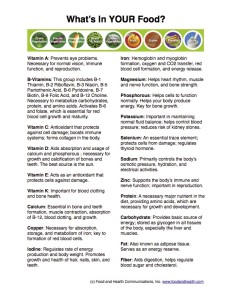Americans love to hate carbohydrates. If cutting carbs means avoiding foods like white bread, big bagels, and sugary cereals, go for it. If it means you’re afraid to eat a banana or drink low-fat milk, we need to talk!
It’s our job to teach people two things about carbs. First, that carbs are the body’s main source of energy, so you can’t do without them. And second, that all carbs are not equal when it comes to calories, fiber, and important nutrients. Our Be Carb Smart PowerPoint, poster, and color handout can help you set the record straight.
Here are some teaching tips to help people Be Carb Smart:
- Fiber is key. A high fiber diet helps reduce your risk of heart disease, type 2 diabetes, and colon cancer. Fiber also makes you feel full (so you’ll eat less), and helps control blood sugar and cholesterol. Guess which foods provide fiber? Carbs! Be smart – don’t cut out carbs that provide healthy fiber.
- Some carbs are high in calories, low in fiber, and low in nutrients. We call these calorie-dense carbs. Examples are French fries, cookies, crackers, and pretzels. These are the carbs you want to cut.
- Some carbs are lower in calories, higher in fiber, and high in nutrients. We call these calorie-light carbs. Examples are vegetables, fruits, hot cereals, brown rice, and beans. (Low-fat and skim milk count, too, although they don’t provide fiber.) These are the carbs you want to include in your diet.
- MyPlate makes it easy to be carb smart: If you fill your plate with half fruits and vegetables (especially non-starchy veggies), one quarter whole grains, and one quarter protein, you’ll automatically get more calorie-light carbs, plenty of fiber, and other important nutrients.
- Be smart about fruit. Fresh, whole fruit is your best bet. Frozen and canned fruit without added sugar is also a good choice. Look for fruit canned in water or fruit juice. Limit dried fruit and fruit juice – both are higher in calories than other forms of fruit.
- Be smart about veggies. Starchy vegetables like potatoes and sweet potatoes are higher in calories than non-starchy veggies like broccoli, tomatoes, and spinach. But they are still calorie-light carbs — unless they’re fried. Fried potatoes (calorie-dense carbs) have 1400 calories per pound, while baked potatoes (calorie-light carbs) have about 500 calories per pound.
- Be smart about grains. Less processed is best — so choose more whole grains, like brown rice, whole-wheat pasta, oats, and barley. Whole grain bread is fine, but don’t use it as your grain for every meal. Try to mix it up to get more variety.
Carbs get a bad rap. We can restore their reputation by helping folks learn to be carb smart!












